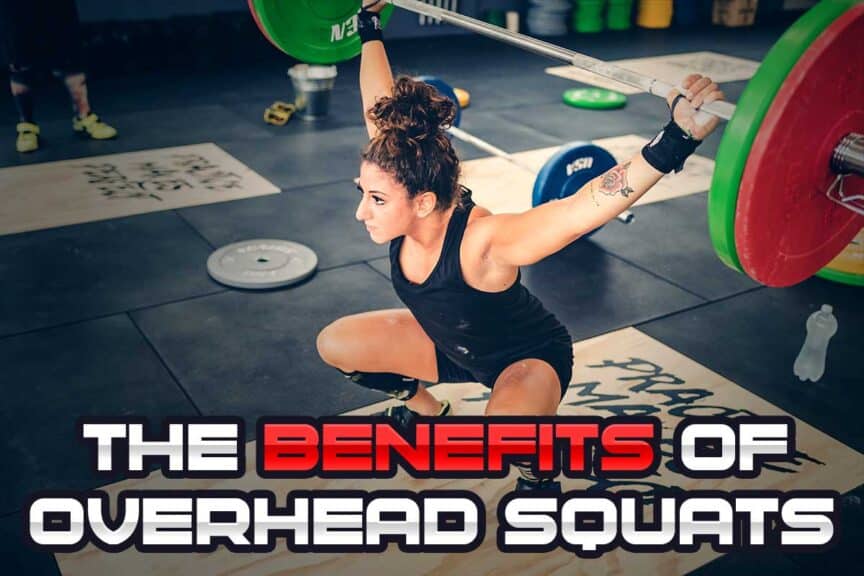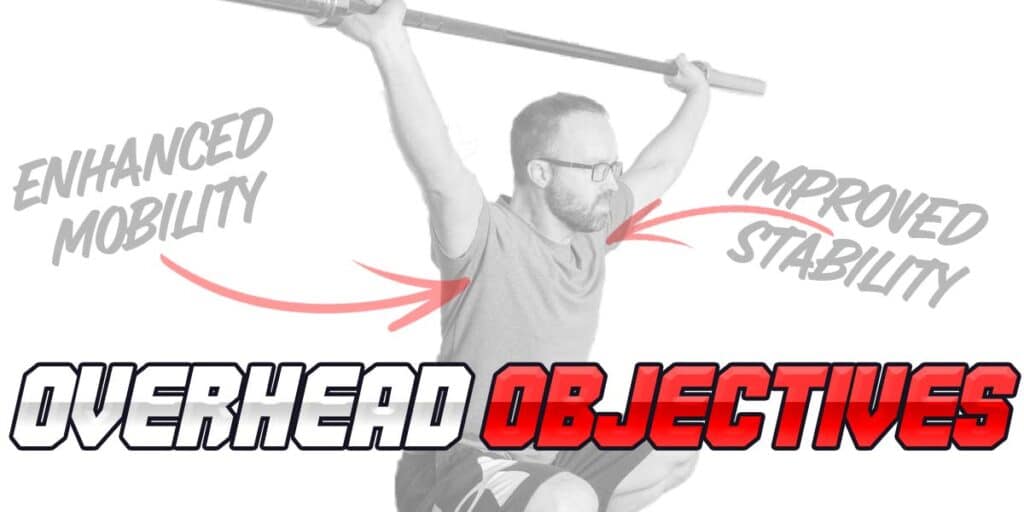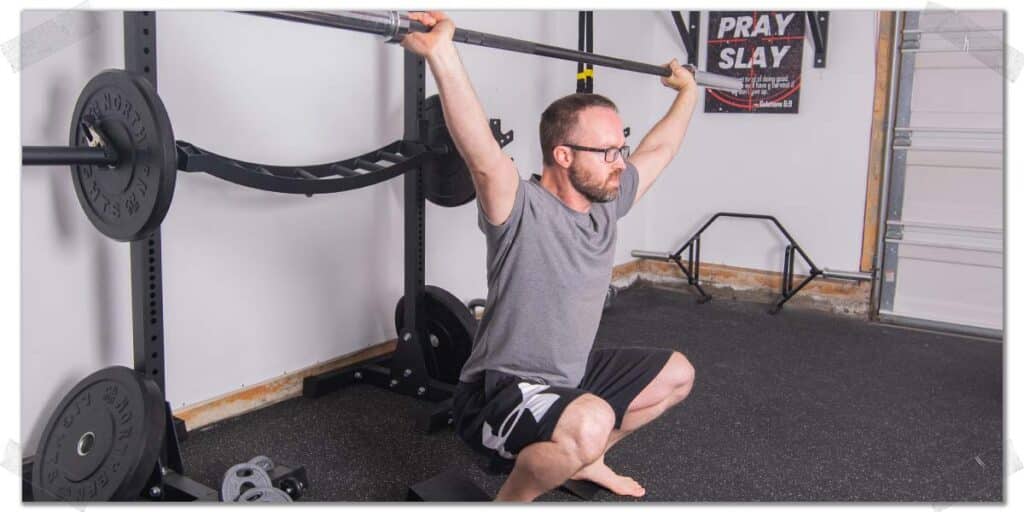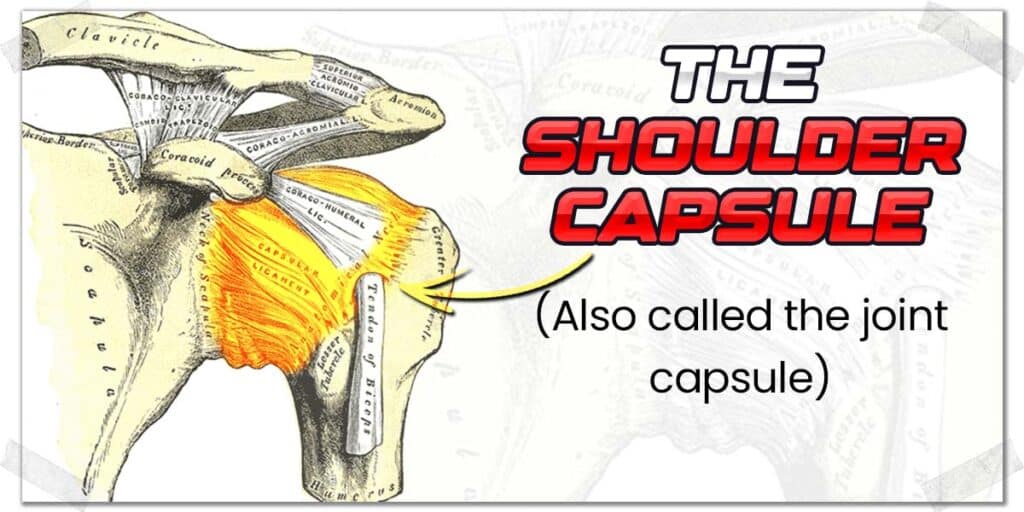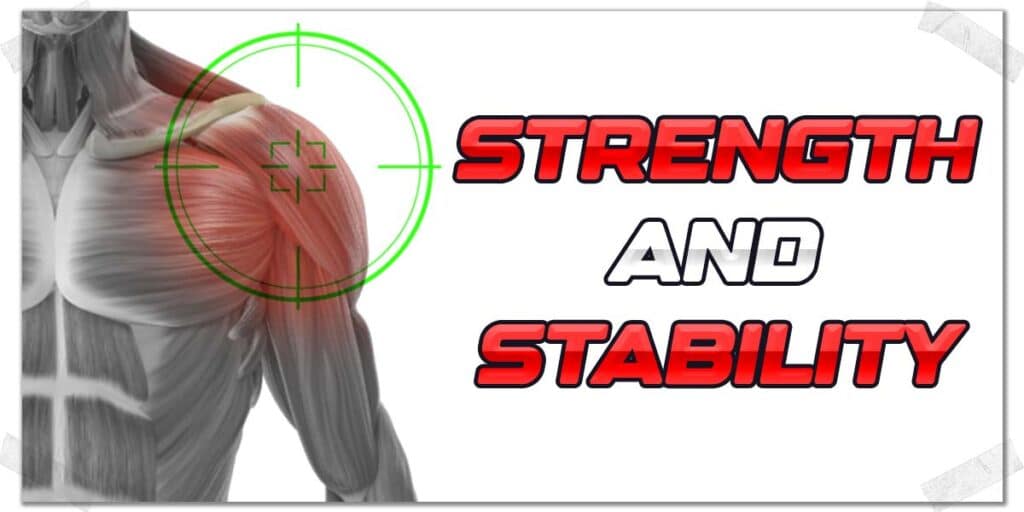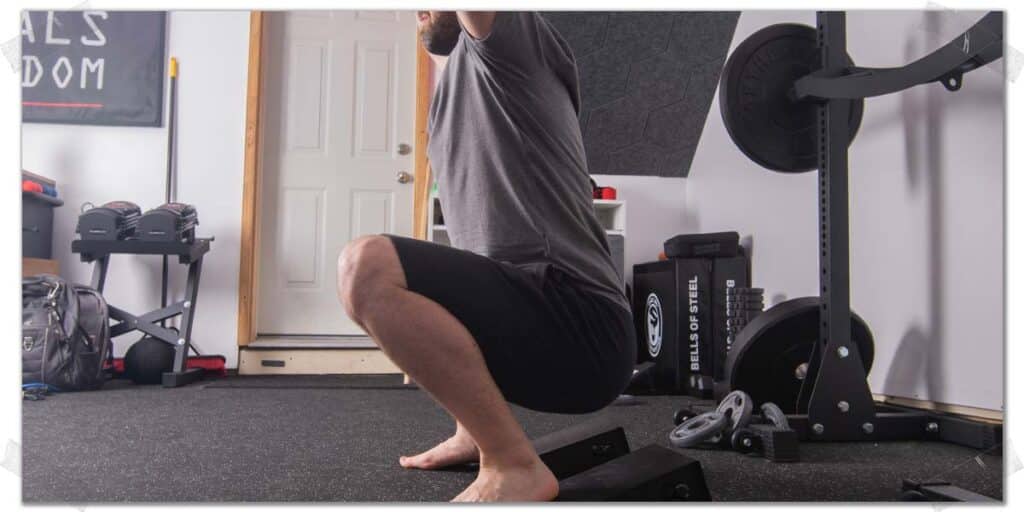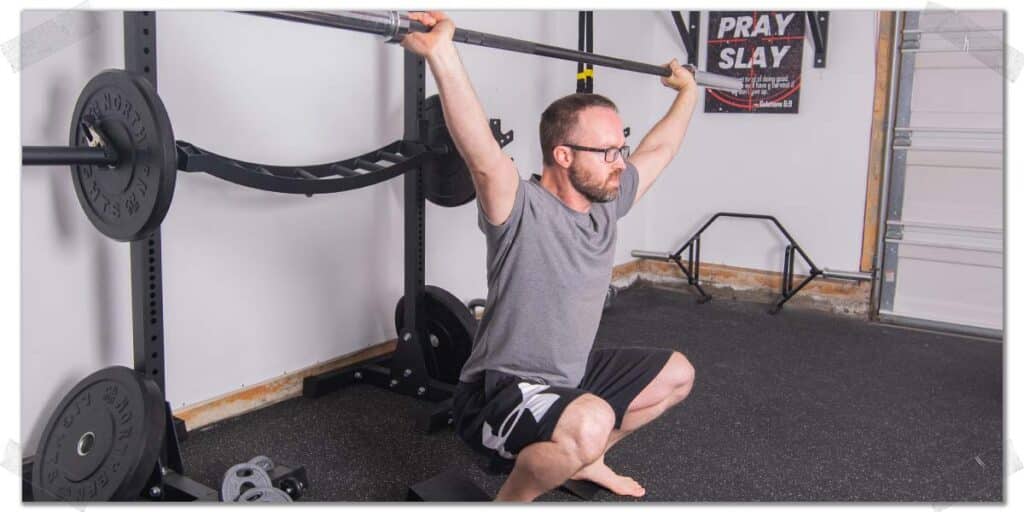If there were only one exercise I could perform for the rest of my life, it might just be the overhead squat. Ideally, I’d likely perform the snatch since it contains the overhead squat and a wide-grip deadlift. But I digress—overhead squats are a phenomenal exercise that offers immense physical benefits in one’s training pursuits.
From improving full-body strength to cleaning up numerous mobility issues to improving joint health, the overhead squat offers some of the biggest bang-for-buck benefits to be had compared to all other traditional strength training exercises.
Yes, the overhead squat can truly help improve your physical performance and function in numerous ways. It will expose movement flaws, strength deficits, and provide a full-body training stimulus all in one fell swoop. The exercise itself is essentially a full-body workout, making it not only an incredibly time-efficient movement but one that makes you downright bulletproof in numerous other physical aspects.
Want to find out why and how? Keep on reading!
A small request: If you find this article to be helpful, or you appreciate any of the content on my site, please consider sharing it on social media and with your friends to help spread the word—it’s truly appreciated!
As we get going with this article, keep in mind that you don’t have to perform overhead squats with heavy weight; you can practice with a broom handle, a plastic PVC pipe, or evening a training barbell.
However, to get the most out of the movement, you’ll likely want to get to a point where you have at least a light-to-moderate resistance (even just the barbell itself) above your head. From a practice-based perspective, this will likely be your best bet, as a bit of weight over your head helps to force your body to “feel the challenge” of the movement in a way that helps improve your mobility, joint stability, and overall execution of the exercise.
Think of it like riding a bike: when learning to ride, it’s actually easier to do so with some speed than riding incredibly slow. Much the same, to get the most noticeable benefits out of the overhead squat, you’ll want to use a weight that’s challenging, picks on your strength and mobility a bit, but doesn’t compromise your safety or execution of the movement.
Alright, let’s talk about these benefits.
Benefit 1: Improved scapulothoracic mobility
The scapulothoracic joint refers to the articulation of the scapula (the shoulder blade) and the thorax (the area between the neck and abdomen). Notably, the shoulder blade lies on top of the rib cage and just lateral to the thoracic spine. Nearly any shoulder movement you perform will involve movement occurring at the scapulothoracic joint.
Raising your arm above your head to achieve the position required for overhead squats requires your scapula (shoulder blade) to go through a movement called upward rotation. Without this upward rotation, you can’t get your arm above your head required for the exercise. If, by chance, you can, you’ll be doing this with poor scapulohumeral rhythm and will be at high risk of developing shoulder impingement.
Anatomy fact: The scapulothoracic joint is not a “true” joint since it does not involve the direct articulation of one bone with another. As such, it is classified as a physiologic joint.
Having healthy levels of this particular shoulder movement will not only help improve your performance with nearly all other shoulder-based exercises, but it will also help reduce the annoying aches and pains individuals often experience in their everyday lives for activities of daily living.
Poor scapulothoracic mobility is a recipe for disaster in active individuals, particularly in overhead athletes and weightlifters. As such, finding ways to routinely challenge and maintain the mobility (and strength) of the muscles that comprise this physiologic joint is essential.
Overhead squats fit the bill quite nicely here. They’ll challenge the mobility, strength, and endurance of this anatomical complex in ways that can help clean up any of its deficits, which will prevent injury, optimize performance, and mop up any aches or pains that arise from sub-par function.
“Healthy levels of overhead shoulder movement will improve performance with other exercises and reduce aches and pains with activities of daily living.”
Benefit 2: Improved capsular mobility of the glenohumeral joint
The glenohumeral joint (the ball and socket joint that makes up the shoulder) needs to have a full range of motion if you’re to have any hope of holding a barbell directly above your head. Additionally, this joint needs to stay healthy and mobile if you’re looking to have pain-free training with essentially any other upper-body exercise you perform in the gym.
The normal range of motion for the shoulder, when raising it above your head, is 180 degrees (either via flexion or abduction). This allows the arm to be positioned vertically—a requirement for overhead squats.
The ability to undergo full range of motion at the glenohumeral joint is largely dependent upon the mobility of the joint capsule of the shoulder, which can often become stiff and painful in all populations.
While the shoulder joint can become stiff and lose range of motion for various reasons, capsular restriction or stiffness of the joint capsule often arises due to routinely avoiding large ranges of motion with the shoulder—use it or lose it, ya know?
In other words: if you’re not routinely placing your arms above your head, you’re not taking your shoulders through full ranges of motion, which means you just might start experiencing stiff shoulders and, subsequently, lose available range of motion.
Overhead squats will wind up and challenge your shoulder capsule to its near-maximal extent, which can help regain any loss of mobility to this tissue or help preserve its mobility.
Sure, you can perform other outstanding exercises to help offset this issue, such as dead hangs, but the overhead squat will provide all the other benefits covered in this article in addition to merely optimizing your shoulder mobility.
Joint capsule stiffness often arises due to routinely avoiding large ranges of motion with the shoulder—use it or lose it, ya know?
So, the takeaway here is that it’s hard to train the upper body or have a high quality of life when your shoulder capsule is stiff and painful. And thankfully, overhead squats can help reduce the chances of this occurring.
RELATED CONTENT:
Benefit 3: Improved shoulder strength and stability
As if improving and ensuring optimal shoulder mobility wasn’t good enough, overhead squats also help to improve the strength and stability of your shoulder joint.
After all, adequate joint mobility without adequate strength around the joint is a recipe for disaster, i.e., injury.
Yes, it’s entirely possible to improve joint and soft tissue (muscle and tendon) mobility while simultaneously increasing strength and stability. Let me explain:
The integrity of a joint is determined by two primary structures:
- The non-contractile tissue that crosses the joint (ligaments and joint capsule);
- The contractile tissue (i.e., muscle tissue) that crosses the joint.
There’s nothing you can do to train the strength of non-contractile tissue. Thankfully, there’s plenty you can do to train your muscles.
The stronger a muscle is, the more force it can produce to “clamp down” on the joint, creating stability by reducing unwanted translation (movement) of the joint.
The glenohumeral joint, by nature, is an inherently unstable joint due to its naturally high level of mobility (how many active people have you heard of or know that have dislocated their shoulder?).
Pro tip: the more mobility a joint has, the more stability it must give up in return.
With this inherent instability, performing strength training exercises for muscles crossing the shoulder joint is a smart move to make. And while any shoulder-strengthening exercises are likely helpful, there’s something very unique about how the overhead squat works to improve shoulder stability.
Read on to find out more!
“Adequate joint mobility without adequate strength around the joint is a recipe for disaster.”
Co-contraction of the shoulder joint
The phenomenon of co-contraction refers to a group of muscles (all of which cross over the same joint) simultaneously producing and maintaining their respective muscular contraction. This leads to bracing and stabilization of the joint.
When performed with weight, the overhead squat requires a high degree of co-contraction taking place around the shoulder joint to achieve overall shoulder stability during the exercise.
Some of the muscles involved in this co-contraction process include:
- The rotator cuff muscles (a group of four muscles)
- The deltoid (anterior, middle, and posterior fibers)
- The upper trapezius muscle fibers
- The latissimus dorsi muscle
- The pectoralis major & minor muscle
The stronger these muscles are, and the better they are at co-contracting, the more stable the shoulder joint can become when subjected to external forces (often known as perturbations).
Stable shoulders are healthy shoulders; they are much less likely to become injured and can also lead to improved performance abilities for various physical tasks and exercises, both in the gym and with everyday activities.
Benefit 4: Improved thoracic spine mobility
The thoracic spine refers to the twelve vertebrae of your mid-upper back that sit directly beneath your cervical vertebrae (the seven vertebrae in your neck) and directly above your lumbar vertebrae (the bottom five vertebrae of your spine).
This portion of your spine often gets stiff and loses some of its natural mobility, particularly in those who sit at desks all day long or spend a large portion of their time in a posture where their upper back is in a rounded (flexed) position with their shoulders rounded forward. (It’s often seen in a postural dysfunction known as upper crossed syndrome.)
“Poor scapulothoracic mobility is a recipe for disaster in active individuals, particularly in overhead athletes and weightlifters.”
The overhead squat fixes these issues since it demands that your thoracic spine move into (and hold) an extended (straight) position throughout the exercise. This not only improves the mobility of the thoracic spine, but also strengthens the muscles along the spine that must move and then hold it in this position while performing the squat.
For an effective overhead squat, your thoracic spine must have adequate mobility whereby it can move into (and hold) extension. The overhead barbell squat forces your spine to adapt to and achieve this position, making it a perfect exercise for improving mid and upper-back spinal mobility.
Nothing like improving your spinal mechanics and reducing postural dysfunction while strengthening your entire body at the same time!
Benefit 5: Improved lower body mobility
When the body can’t properly perform a physical movement, it will often move in a dysfunctional matter by compensating elsewhere in the body.
With your upper body being forced to maintain strict positioning during the overhead squat, your lower body won’t have a whole lot of “wiggle room” when it comes to compensating for any lack of movement in your lower back, hips, or ankles.
If any area of your lower body has poor mobility (immobile hips, stiff ankles, etc.), the overhead squat will expose these issues since the major joints of the upper body and the spine will essentially be “locked out” in a manner that forces any required lower body movement to come from the ankles, knees, and hips, without any compensation arising in the upper body.
Pro tip: If your upper or lower body mobility is reduced to the extent that it makes performing the overhead squat difficult, you may want to invest in a pair of Olympic lifting shoes (“Oly” shoes) or stand on a slanted board or squat wedges when performing the movement. These strategies can shorten the backside of your body (the posterior chain) in a manner that improves your squat range and makes the exercise much more comfortable.
If you’re looking for an exercise that can help improve your overall strength and conditioning while exposing any poor lower body mobility, the overhead squat is the one.
The folks over at MasterClass have a solid guide they’ve put together that can help you master your overhead squat technique, so that might be worth checking out if you’re interested!
Benefit 6: Improved core strength
The overhead squat does a heck of a lot for the muscles of the lower back and the obliques, which are muscles comprising the “core” around our abdominal region.
Squatting with weight above your head makes you quite top-heavy, which forces these torso muscles to undergo (and sustain) an intense contraction (known as an isometric muscle contraction) to prevent you from collapsing forward, sideways, backward, etc.
Essentially, every muscle around your midsection (front, back, and side) undergoes a certain degree of isometric contraction when squatting with weight above your head.
If you’re not aware, a stronger torso can help prevent numerous types of injuries and lower back pain. In particular, strengthening the spinal erectors (erector spinae) has been shown to be immensely helpful in reducing and eliminating various types of back pain that arise from a lack of muscular strength.
Sure, you can perform traditional core-strengthening exercises, but the point to be made here is that the overhead squat helps build a strong set of core muscles in a functional, weight-bearing manner while simultaneously packing all the other additional body-enhancing benefits mentioned in this article.
Related article: Sit-ups and Back Health: Why Science Suggests Other Exercises Instead
Benefit 7: It’s a full-body compound movement
The overhead squat is far more than a leg exercise. Yes, it strengthens your quads, glutes, and even your adductors, but it strengthens numerous muscles in the upper body.
Your shoulders, upper traps, and triceps also undergo an immense challenge to maintain the overhead position throughout the exercise. Additionally, these muscles must work to lift the weight above your head just to start the exercise!
And with all of this being completed within a single movement, the overhead squat makes for:
- A highly time-efficient movement
- A rather functional movement pattern
All of this makes for an exercise that is not only highly time-efficient with strengthening your muscles (since you’re training multiple muscles at once) but also with strengthening the bones in your body as well since your arms, spine, and legs are all under load.
So, if you need an exercise that can strengthen your muscles and bones in a highly time-efficient manner, the overhead squat is likely the one.
Benefit 8: Improves snatch technique
If you have any interest in learning the Olympic lifts, particularly the snatch, performing the overhead squat will be your best friend since it replicates a significant portion of the snatch itself.
The snatch is arguably the most technically complex resistance exercise to be performed, and it often requires lifters to break the movement into different portions when training the lift. Ask any competitive Olympic lifter the importance of performing overhead squats as part of their training routine, and they will likely tell you that it is an invaluable exercise to their training.
To be proficient at the snatch means you must be technically proficient throughout every portion of the movement. You must be good at your first pull, second pull, transition, the catch, and…the overhead squat.
If you’re rock-solid with every phase of your snatch but have poor technique or control on your overhead squat, it doesn’t matter how good the other portions of your lift are—everything will be held back and limited by the weakest portion of your lift.
So, if you’re serious about building a brutally powerful snatch, take the time to work on your overhead squats.
Final thoughts
The overhead squat offers full-body benefits for strength, mobility, and movement control. As such, there are few other exercises that can replicate the same type and extent of physical benefits the way overhead squatting can.
So, now that you know how overhead squats can make you stronger and improve your overall physical performance, go do some!
Frequently Asked Questions
Since we’re on the topic of overhead squats, I’ve included a few brief answers to some commonly asked questions individuals have about performing this exercise!

Hi! I’m Jim Wittstrom, PT, DPT, CSCS, Pn1.
I am a physical therapist who is passionate about all things pertaining to strength & conditioning, human movement, injury prevention and rehabilitation. I created StrengthResurgence.com in order to help others become stronger and healthier. I also love helping aspiring students and therapists fulfill their dreams of becoming successful in school and within their clinical PT practice. Thanks for checking out my site!

